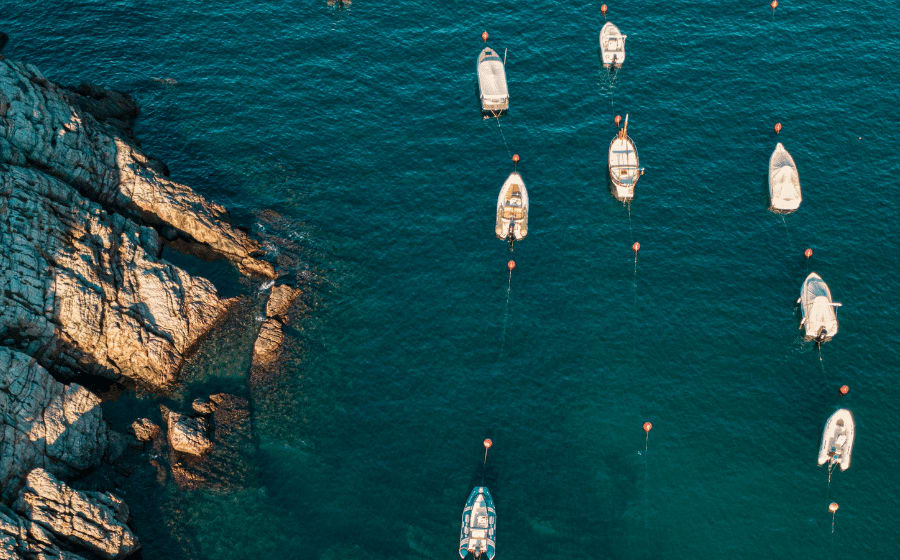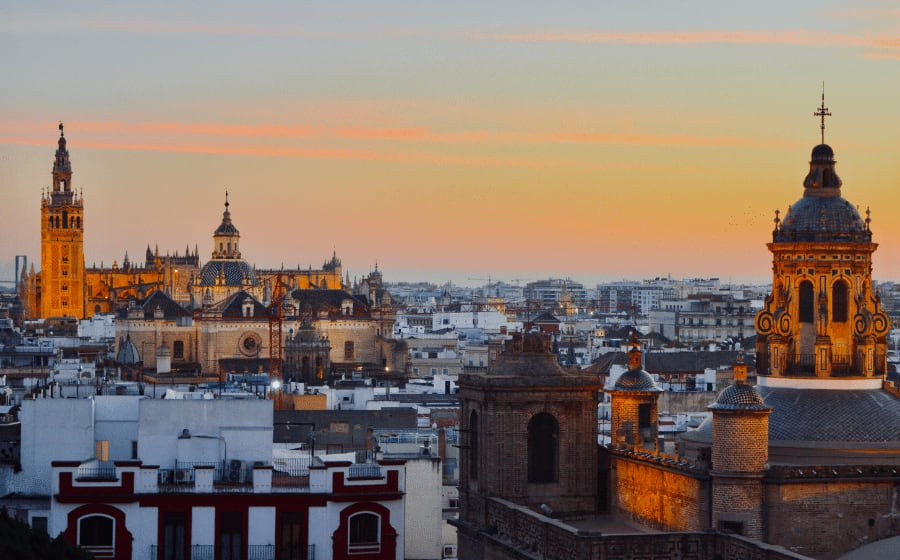Does it Snow in Spain? Monthly Snowfall in 10 Big Cities
October 10, 2022
Win a FREE Trip to Spain!
Exciting Announcement! For the first time, we're thrilled to offer exclusive trips to the heart of Spain - an experience like no other. This isn't your typical tourist journey; it's a unique opportunity to immerse yourself in authentic Spanish culture, alongside real locals and our passionate team.
But there's more! Simply by requesting information about this amazing trip, you'll be entered into a special draw to win a Fully Paid Trip to Spain for Two. And that's not all - everyone who inquires will receive an exclusive bonus gift, valued at $500, available only now.
Ready to Discover the Real Spain?Click Here ↑ to Request Information & Enter the Draw!
Would you believe me if I told you that Spain had a snowfall of up to 40 centimeters last year?
The country known for being all about fantastic Mediterranean bright weather also experiences low temperatures and snowstorms from time to time.
During Winter, snowfalls in Spain depend on the region you are visiting since the climate varies considerably. There are low temperatures and constant rains, but the cold is not so severe. This is why I’m here to tell you everything about Snowfall precipitation in this country. Facts, historical records, how much it snows, how often, where, and countries ranked by the days it snows!
But first, If you’d like to get some background information about seasons and Climate in Spain before we begin, I suggest you read the following articles that might be helpful!
What is the climate in Spain? Our Real Weather and Temperature
After reading this article, you’ll be ready to book your flights since you’ll know in which months you can find snow in Spain and where. And most importantly, I’ll mention the absolute BEST places for spending the cold season, ski resorts, and our favorite apres ski plans!
Grab your gear, and let’s take you 1000 meters above sea level!

Table of Contents ▼ ▶
Does it snow in Spain?
It does snow in Spain. There are approximately 35 days of snow precipitations a year, especially during the Winter (from December to March) in cities such as Burgos, Soria, Ávila, Segovia, and León.
Does it snow in Madrid?
Winter is cold and dry in Madrid. It usually doesn’t snow. However, it can occur at the end of December and the beginning of January, which is the coldest month. The city has approximately 4 days of snow a year, and due to its sunny days and blue skies, white landscapes don’t stay long.
| Month | Average monthly/yearly snow days | Monthly/yearly average of daily minimum temperatures (°C) |
|---|---|---|
| January | 1 | 2.7 |
| February | 1.3 | 3.7 |
| March | 0.2 | 6.2 |
| April | 0.3 | 7.7 |
| May | 0 | 11.3 |
| June | 0 | 16.1 |
| July | 0 | 19 |
| August | 0 | 18.8 |
| September | 0 | 15.4 |
| October | 0 | 10.7 |
| November | 0.1 | 6.3 |
| December | 0.6 | 3.6 |
| Year | 3.6 | 10.1 |
Does it snow in Barcelona?
Barcelona doesn’t get snow very often. However, light snow precipitations can happen in the city for a few hours and melt afterward. There are 0.4 snowfall days throughout the year and 3mm (0.12") of accumulated snow. The city around the coldest months, January and February, has an average temperature of 59 °F (5 °C) during the day and 48 °F (9 °C) at night.
| Month | Average monthly/yearly snow days | Monthly/yearly average of daily minimum temperatures (°C) |
|---|---|---|
| January | 0.1 | 4.7 |
| February | 0.2 | 5.4 |
| March | 0.1 | 7.4 |
| April | 0 | 9.4 |
| May | 0 | 12.8 |
| June | 0 | 16.8 |
| July | 0 | 19.8 |
| August | 0 | 20.2 |
| September | 0 | 17.4 |
| October | 0 | 13.5 |
| November | 0.1 | 8.6 |
| December | 0 | 5.7 |
| Year | 0.4 | 11.8 |
As you can see, you can enjoy the snow in the big capitals of Spain. In fact, in 2021, one of the biggest snowstorms in many years was recorded, called Filomena. It painted Spain’s cities completely white. Below are some pictures so you can understand what I’m talking about…
The remarkable meteorological phenomenon took place between January 6 and 10, 2021. This event left overflowing snowfalls, even in the peninsula’s interior, where it is not frequent to find snow. In fact, Madrid was one of the areas most affected by the heavy snowfall, and it caused severe devastation in all areas of the region for several days.
Then, a historical record was reached after Filomena disappeared and the skies cleared on Sunday the 10th. A cold spell appeared and lasted almost a week.

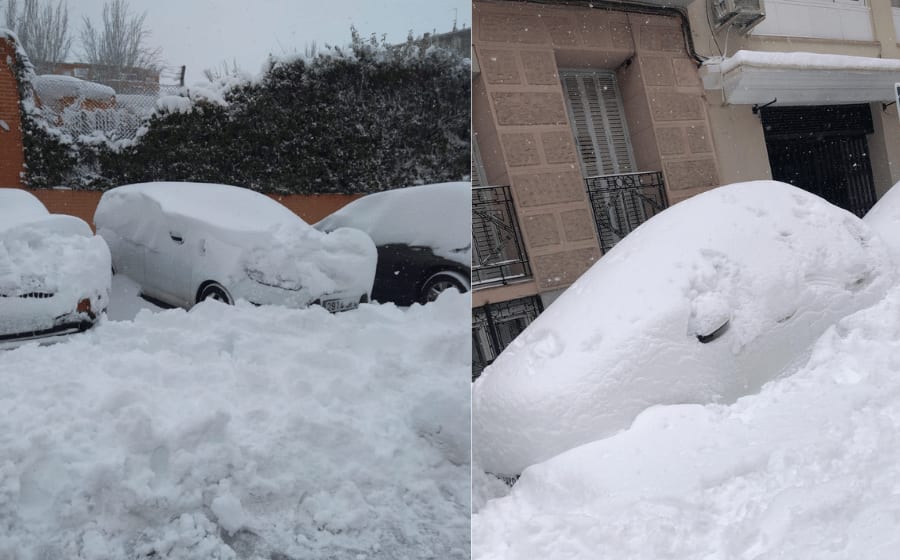

Does it snow in Mallorca?
There is no snow in the city center of Mallorca. However, there is occasional snow in the Sierra de Tramuntana and its foothills. Especially in the area between the viewpoint of Ses Barques and the Sanctuary of Lluc is where you can see more snow.
Moreover, according to the records, there was snowfall in 2012 that dyed white all over the Balearic Islands. Also, a historical snowfall record was marked in 1956 since it lasted more than 15 days. Later, two others were observed in 1985 and 2005, also recorded on the Island.
| Month | Monthly/Annual average temperatures (°C) | Monthly/Annual average of maximum daily temperatures (°C) | Monthly/Annual average of minimum daily temperatures (°C) |
|---|---|---|---|
| January | 9.5 | 15.2 | 3.8 |
| February | 9.8 | 15.4 | 4 |
| March | 11.3 | 17.5 | 5.2 |
| April | 13.6 | 19.8 | 7.4 |
| May | 17.5 | 23.7 | 11.3 |
| June | 21.7 | 28.1 | 15.4 |
| July | 24.8 | 31.2 | 18.3 |
| August | 25.1 | 31.3 | 18.9 |
| September | 22.2 | 27.9 | 16.5 |
| October | 18.5 | 23.9 | 13.1 |
| November | 13.7 | 19 | 8.3 |
| December | 10.8 | 16.1 | 5.4 |
| Year | 16.5 | 22.4 | 10.6 |
Does it snow in Canary Islands?
It is not common for it to snow on the Canary Islands. However, some occasional snowfalls have been recorded due to storms and occasional situations where the Island has received snow. The winters in this autonomous community are known to be warm and of Mediterranean climate. With temperatures ranging between 21° / 16° Celsius in December; between 20° / 15° Celsius in January; and 20° / 15° Celsius in February.
Gran Canaria
| Month | Monthly/Annual average temperatures (°C) | Monthly/Annual average of maximum daily temperatures (°C) | Monthly/Annual average of minimum daily temperatures (°C) |
|---|---|---|---|
| January | 17.9 | 20.8 | 15 |
| February | 18.2 | 21.2 | 15 |
| March | 19 | 22.3 | 15.7 |
| April | 19.4 | 22.6 | 16.2 |
| May | 20.4 | 23.6 | 17.3 |
| June | 22.2 | 25.3 | 19.2 |
| July | 23.8 | 26.9 | 20.8 |
| August | 24.6 | 27.5 | 21.6 |
| September | 24.3 | 27.2 | 21.4 |
| October | 23.1 | 26.2 | 20.1 |
| November | 21.2 | 24.2 | 18.1 |
| December | 19.2 | 22.2 | 16.2 |
| Year | 21.1 | 24.2 | 18 |
Santa Cruz de Tenerife
| Month | Monthly/Annual average temperatures (°C) | Monthly/Annual average of maximum daily temperatures (°C) | Monthly/Annual average of minimum daily temperatures (°C) |
|---|---|---|---|
| January | 18.2 | 21 | 15.4 |
| February | 18.3 | 21.2 | 15.3 |
| March | 19 | 22.1 | 15.9 |
| April | 19.7 | 22.7 | 16.5 |
| May | 21 | 24.1 | 17.8 |
| June | 22.9 | 26.2 | 19.5 |
| July | 25 | 28.7 | 21.2 |
| August | 25.5 | 29 | 21.9 |
| September | 24.9 | 28.1 | 21.7 |
| October | 23.4 | 26.3 | 20.3 |
| November | 21.3 | 24.1 | 18.4 |
| December | 19.4 | 22.1 | 16.6 |
| Year | 21.5 | 24.6 | 18.4 |
Snowiest Cities and Towns in Spain
1. Burgos
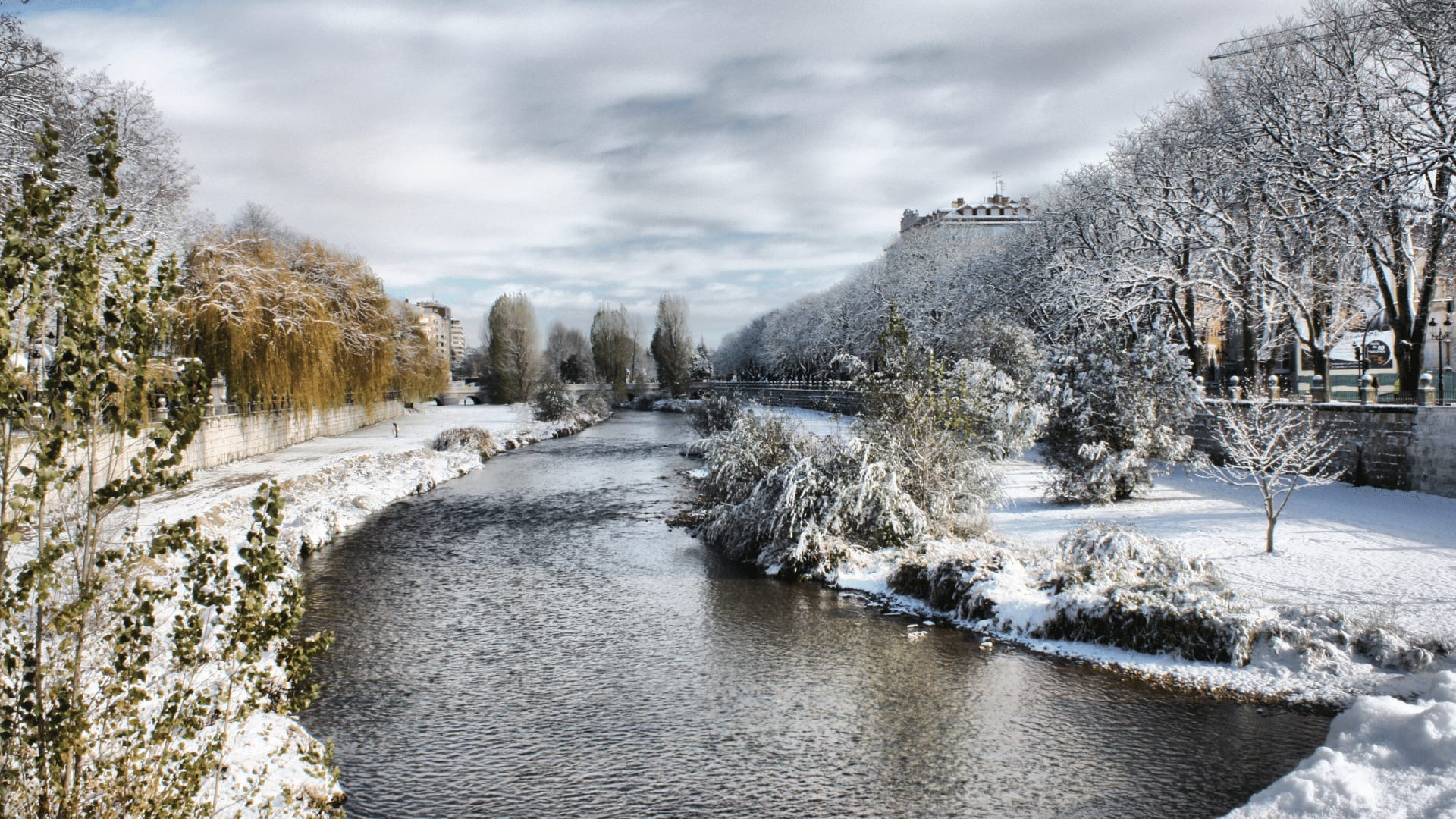
The beautiful city of Burgos is known for its iconic Postal Snowy Cards. It offers visitors a frozen winter landscape some days of the year. The town gets fully covered in white, mainly because of its altitude, which is approximately 859m above sea level —allowing the perfect scenario for snowy landscapes to form!
Burgos’s average monthly snowfall in the winter is primarily constant and remains at approximately 28 millimeters, rarely exceeding 119 millimeters or falling below 0 millimeters. (in a 31 day period) It is considered the snowiest city in Spain with approximately 18.5 days of snow precipitations a year during Winter.
As you might see, the city of Burgos is the perfect place to see the snow in Spain. It is considered one of the country’s most chilly places to spend the winter. It has an Oceanic / Atlantic Climate characterized by cold, windy winters with below-zero temperatures. And, locates in the center of the Burgo province (to the north of Madrid) in the Autonomous Community of Castilla y León. To learn more about Regions and Autonomous Communities in Spain, read these articles:
Does Spain has States? All 50 Regions and 17 Autonomous Communities
Map ofSpain: Get To Know Spanish Cities Like the Palm of Your Hand
Daily maximum temperatures are around 46.4°F, 8°C rarely falling below 46.4°F 35.6°C or exceeding 60.8°F (16°C). While, daily minimum temperatures are around 32°F (0°C) and rarely fall below 21.2°F (-6°C) or exceed 41°F (5°C).
| Month | Average monthly/yearly snow days | Monthly/yearly average of daily minimum temperatures (°C) |
|---|---|---|
| January | 4.7 | -0.8 |
| February | 3.7 | -0.8 |
| March | 2.8 | 1.1 |
| April | 1.9 | 2.7 |
| May | 0.3 | 5.9 |
| June | 0 | 9.2 |
| July | 0 | 11.5 |
| August | 0 | 11.5 |
| September | 0 | 8.9 |
| October | 0 | 5.9 |
| November | 1.7 | 2.1 |
| December | 3.4 | 0.2 |
| Year | 18.5 | 4.8 |
2. Soria

Soria takes the second place of cities where it snows the most in Spain, with an average of 21 days of snow precipitations a year! There are many reasons why this territory has this much snow. One of them is its altitude (1.082 meters above sea level) in the principal capital) Also, cold fronts first hit this city rather than neighboring territories in the same Autonomous Community of Castilla y León.
The month with the highest rate of snow precipitations since 1920 is February, snowing an average of 5.1 days. Followed by January, 5 days, and December, 3.9 days. According to the Official State Meteorological Agency.
Interesting fact: it snowed for 14 days straight on February 1986!!!
Snow season lasts 1.7 weeks a year. From February 17 to March 1. With snow precipitations of at least 25 mm in 31 days and the snowiest month of Soria being February, with precipitations of 24 mm. At the same time, the cold season lasts about 3.8 months, from November 14 to March 7, and the maximum average temperature is approximately less than 50° (10 °C).
| Month | Average monthly/yearly snow days | Monthly/yearly average of daily minimum temperatures (°C) |
|---|---|---|
| January | 5 | -1.3 |
| February | 5.1 | -1 |
| March | 3 | 1 |
| April | 2.5 | 2.8 |
| May | 0.4 | 6.2 |
| June | 0.1 | 9.9 |
| July | 0 | 12.4 |
| August | 0 | 12.2 |
| September | 0 | 9.3 |
| October | 0.1 | 5.8 |
| November | 2.1 | 1.9 |
| December | 3.9 | -0.4 |
| Year | 21.4 | 4.9 |
3. Ávila
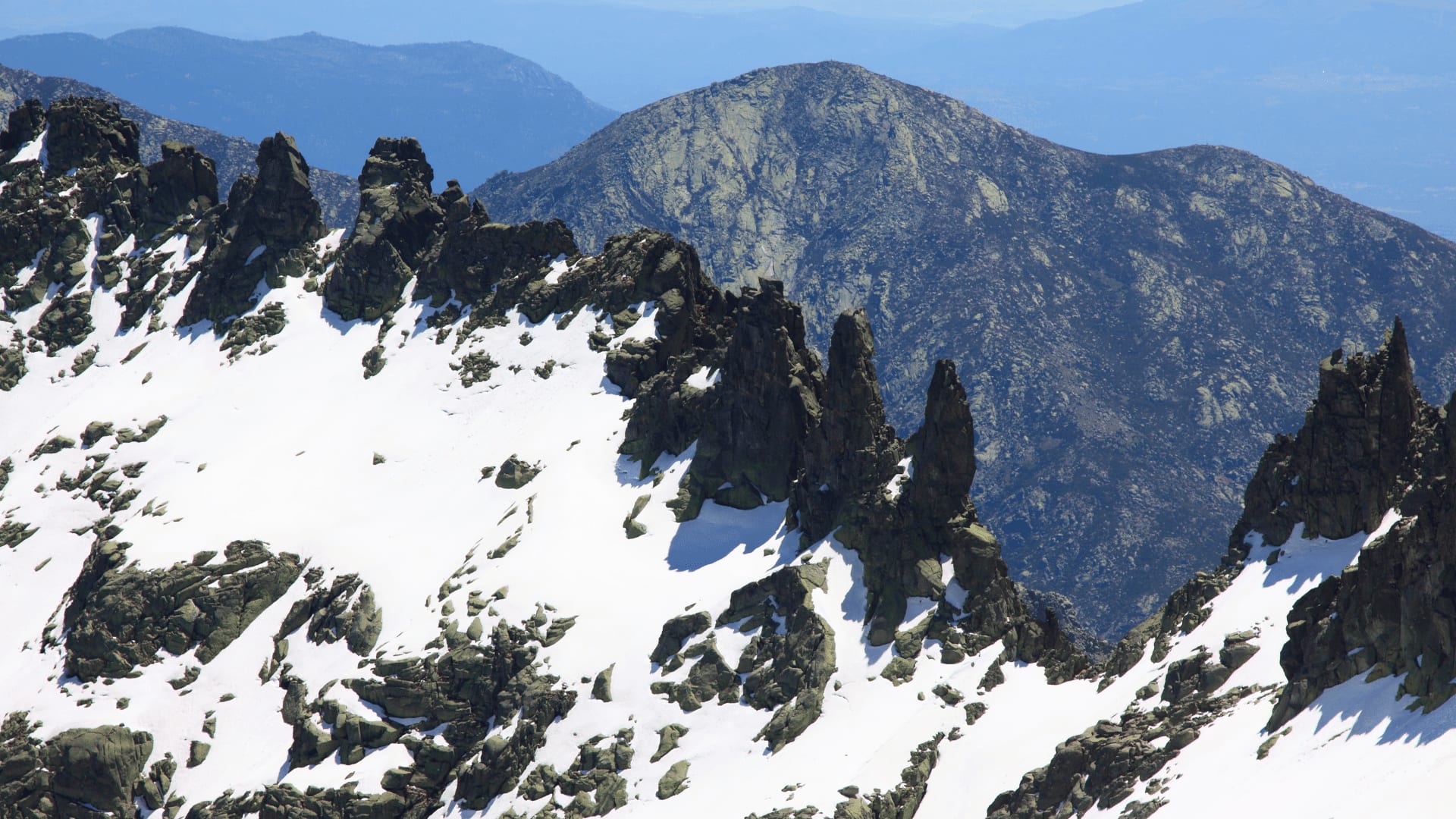
With 1131 m above sea level, Ávila takes third place with 20.4 snowy days a year! (mainly between December and February) This city is located in Castilla y León (as we can see, it snows a lot around here) and has an average of 4.5 snowy days in January.
The average maximum daily temperatures that we can find in Ávila are around 46.4 °F (8 °C), And they rarely drop less than 35.6 °F (2 °C) or exceed 59°F (15 °C). As for the minimum temperatures, they are around 30.2°F (-1 °C), and they rarely drop less than 21.2 °F (-6 °C)
The climate in Ávila is mainly warm and temperate, but winters are freezing, snowy, and windy. There are many days of frost, and the annual average is 90 days with temperatures below 32° F (0° C). From November to March, Ávila has between 12 and 20 days of ice per month, but you can also find some in April, May, and October.
| Month | Average monthly/yearly snow days | Monthly/yearly average of daily minimum temperatures (°C) |
|---|---|---|
| January | 4.5 | -1.6 |
| February | 4.3 | -0.8 |
| March | 2.3 | 0.8 |
| April | 2.2 | 2.7 |
| May | 0.4 | 6.4 |
| June | 0 | 10.2 |
| July | 0 | 12.6 |
| August | 0 | 12.4 |
| September | 0 | 9.6 |
| October | 0.1 | 5.9 |
| November | 1.9 | 1.7 |
| December | 3.2 | -0.4 |
| Year | 20.2 | 5 |
4. Segovia

Segovia belongs to the Autonomous Community of Castilla y León, and its approximately 1000 m above sea level. And it’s known for the famous “Roman Aqueduct of Segovia,” which gets covered in snow almost 2-3 times a year, allowing us to enjoy a fantastic winter scenery!
The cold season lasts about 3.7 months, from November 15 to March 5. Here we can expect a maximum average temperature of less than 51.8°F (11°C). And, the coldest month is undoubtedly January, with an average minimum temperature of 30.2 °F (-1 °C) with the highest being 44.6°F (7 °C). This city is cloudy half of the year (from September until June, characterized by foggy skies). It snows in Segovia for approximately 9 days during the winter season. And there is a high chance of getting both rain and snow simultaneously! Best of both worlds for relaxing at home watching some Christmas Movies.
Interesting Fact: On Christmas Eve of 1973, a catastrophic snowstorm hit the city, lasting 36 HOURS (without interruptions)! It left the small town isolated, and I’m sure many locals remember it since most of them couldn’t get out of the city to celebrate Christmas elsewhere, and the streets were fully covered in white!
| Month | Average monthly/yearly snow days | Monthly/yearly average of daily minimum temperatures (°C) |
|---|---|---|
| January | - | 0.3 |
| February | 3.1 | 1.1 |
| March | 1.7 | 3.2 |
| April | 1.5 | 4.2 |
| May | 0.2 | 8.2 |
| June | 0 | 12.1 |
| July | 0 | 14.6 |
| August | 0 | 14.8 |
| September | 0 | 11.4 |
| October | 0.1 | 7.9 |
| November | 1.6 | 3.4 |
| December | 2.2 | 1.3 |
| Year | - | 6.9 |
5. León
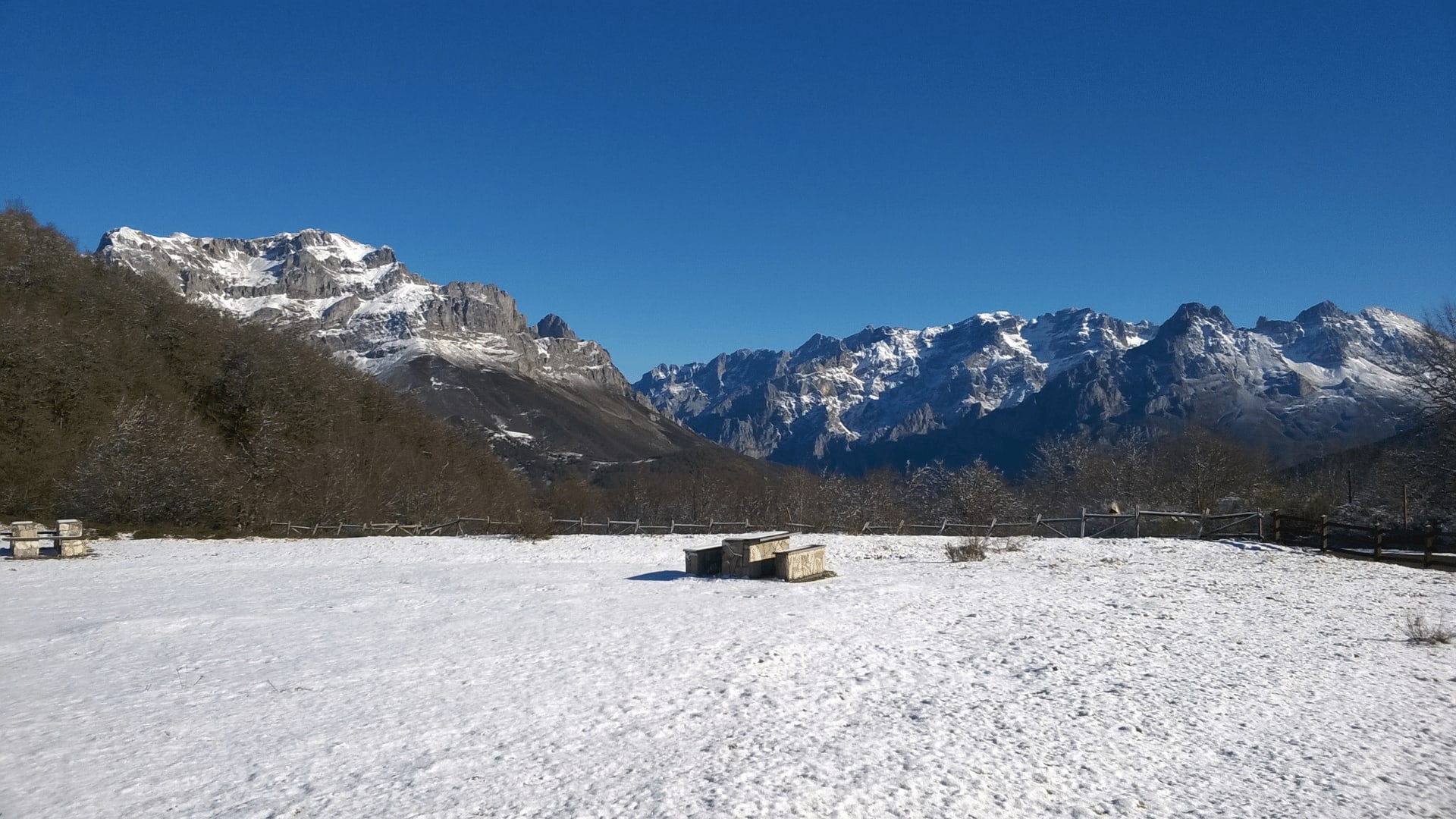
León is considered the 5th snowiest city in Spain! It is located in Northern Spain, in the Autonomous Community of Castilla y León, and has an altitude of 2734 m above sea level.
This city has an Oceanic Mediterranean climate, with really cold winter seasons, in which frosts are typical and frequent. They have 74 average days of frost a year.
The maximum daily temperatures are around 48.2 °F (9 °C), and they rarely drop to less than 37.4 °F (3 °C). While the minimum average temperatures are around 33.8°F (1 °C), rarely dropping to less than 39.2°F (-4 °C).
In winter, from December until February, it gets significantly cold, and temperatures during the night are usually below 32°F (0°C).
Snowstorms are not so frequent, but occasionally, they can be very abundant. (reaching 40 cm). However, compared to other locations we have mentioned before, in Leon, it snows an average of 4.1 days in January and 3.1 days in February. —Don’t let your guard down because it can even rain in April!— To see how much it rains in Spain in the biggest cities look at these articles:
Does it Rain in Spain or is it always a Sunny and Bright Country?
Foggy days are also typical, and frosts are much more common in the coldest winter days in the first hours of the morning. However, ice melts away as soon as the sun goes out.
| Month | Average monthly/yearly snow days | Monthly/yearly average of daily minimum temperatures (°C) |
|---|---|---|
| January | 4.1 | -0.7 |
| February | 3.1 | 0 |
| March | 1.6 | 1.9 |
| April | 0.9 | 3.3 |
| May | 0.1 | 6.6 |
| June | 0 | 10.2 |
| July | 0 | 12.2 |
| August | 0 | 12.3 |
| September | 0 | 10.1 |
| October | 0 | 6.7 |
| November | 0.8 | 2.8 |
| December | 2.2 | 0.4 |
| Year | 13 | 5.5 |
Best Destinations to Enjoy the Snow Season in Spain
We’ve heard quite a lot by now about places where it rains the most and average temperatures. I’m sure you already grasped the idea of what Spain’s snow looks like during Winter, and I hope your doubt has gone about whether it snows or not.
It’s time for you to discover the most beautiful and famous places for skiing and enjoy Spain’s snow season like a true Spaniard!
Winter blues do not get us in “a mood,” and we know how to have some fun even when temperatures are below zero! See it by yourself:

Baqueira Beret, Lleida
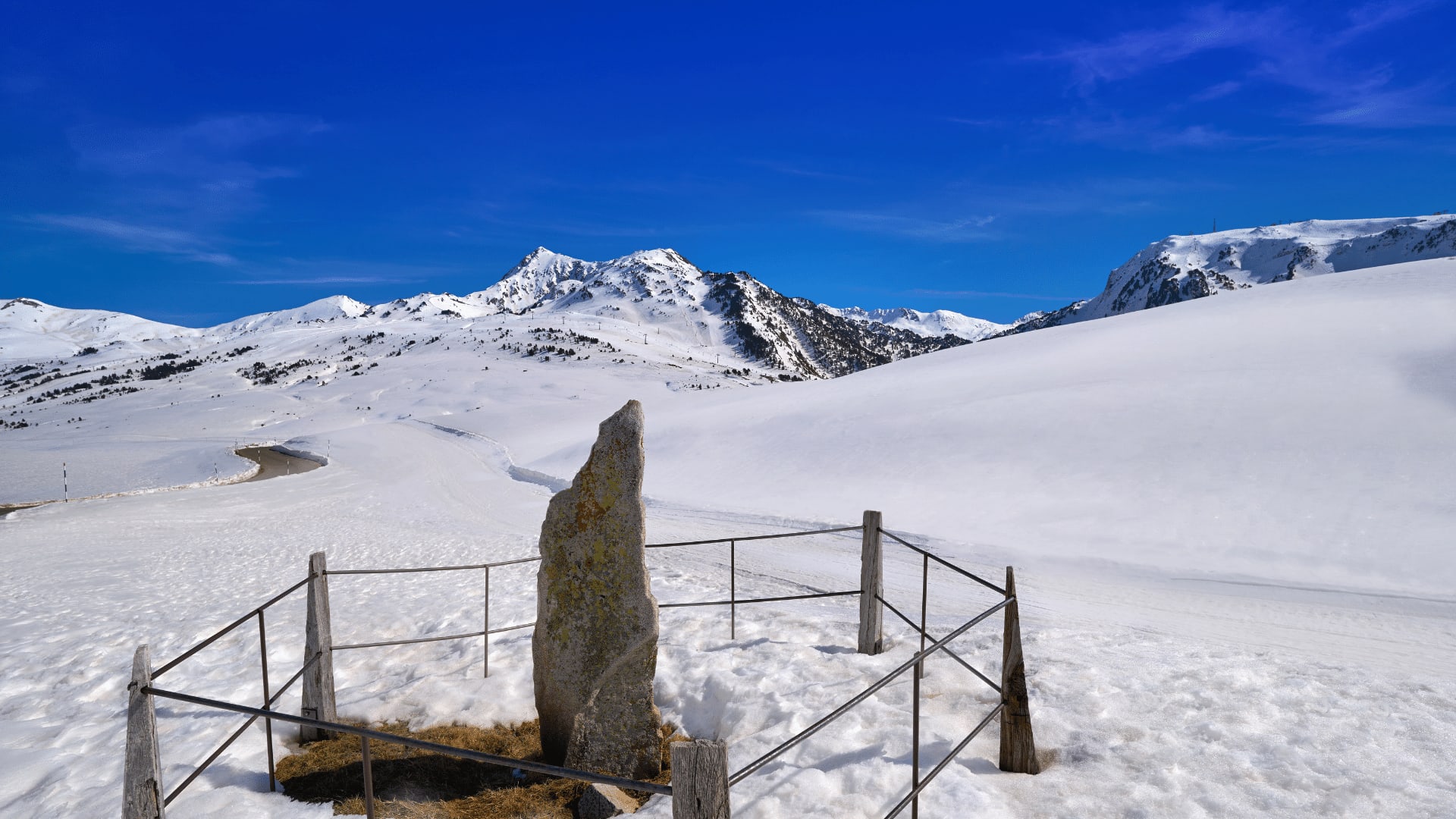
Baqueira Beret is one of the most famous ski resorts in the municipality of Alto Arán, in Lérida, in the Catalan Pyrenees. It has a transport capacity of 59.424 skiers per hour, a ski area of 2.166 ha, 161 km of trodden slopes, 7 km of itineraries, 10 km of cross-country skiing, and 1.101 meters of vertical drop.
Interesting fact: Cap de Vaquèira and Tuc deth Dossau are among the highest points in the resort!
Moreover, for people who ski is not their cup of tea, the resort offers alternatives, including rides in sleighs pulled by horses or dogs, excursions to the semi-abandoned village of Montgarri, cross-country skiing, and procreations with snowshoes and snowmobiles.
You can find more information about accommodation, forfeits, and fees on their webpage: https://www.baqueira.es/ :)
Andrea, 32 years from Madrid: I think Baqueira is for all kinds of skiers. You can go with family and friends because they have slopes for all levels, it’s a very complete ski resort, I love it. On New Year’s Day, they illuminate one of the tracks with torches, and it’s soo cool to see everyone snowboarding down the hill. I must highlight that Baqueira is one of the most expensive skiing places in Spain (if not the first)
Formigal-Panticosa, Huesca

Formigal is a MUST-known ski resort if you plan a skiing trip in Spain. It has 6 valleys and 180 skiable kilometers to enjoy the snow in the spectacular Pyrenean setting of the Tena Valley. It offers the usual services of a ski resort: ski lifts (with a capacity of 35,920 skiers per hour), nursing, ski school, equipment rental, restaurants, etc. It also has 3 special tracks: Snow Park, Video Slalom, and Tubers.
Here’s their webpage! https://www.formigal-panticosa.com/ :)
BUT… some people swear that the best of Formigal is the après-ski at Marchica!! This place consists of a bar with a terrace inspired by the typical atmosphere of bars in the Alps. But it’s not only that. The hype about Marchica is that it has an entire outdoor area where parties, excellent cocktails, and DJs happen!
It’s definitely one of the most important nightclubs since the après-ski atmosphere is just unique. Everyone is moving and dancing to the rhythm of the music.
Eduardo, 26 years from Tenerife: Last winter, I went to Formigal and would recommend it to anyone. The good thing about Formigal is after skiing at Marchica, the après-ski. At night you can take a snow removal machine that will take you to a restaurant to have dinner upstairs.
A helpful tip while deciding between different ski resorts:
Take into account that, in Formigal, you go partying right after skiing, so you have enough time to get dinner and go to bed early to get some rest for the next day!
You can find more info about Marchica here: https://www.formigal-panticosa.com/marchica
Sierra Nevada, Granada
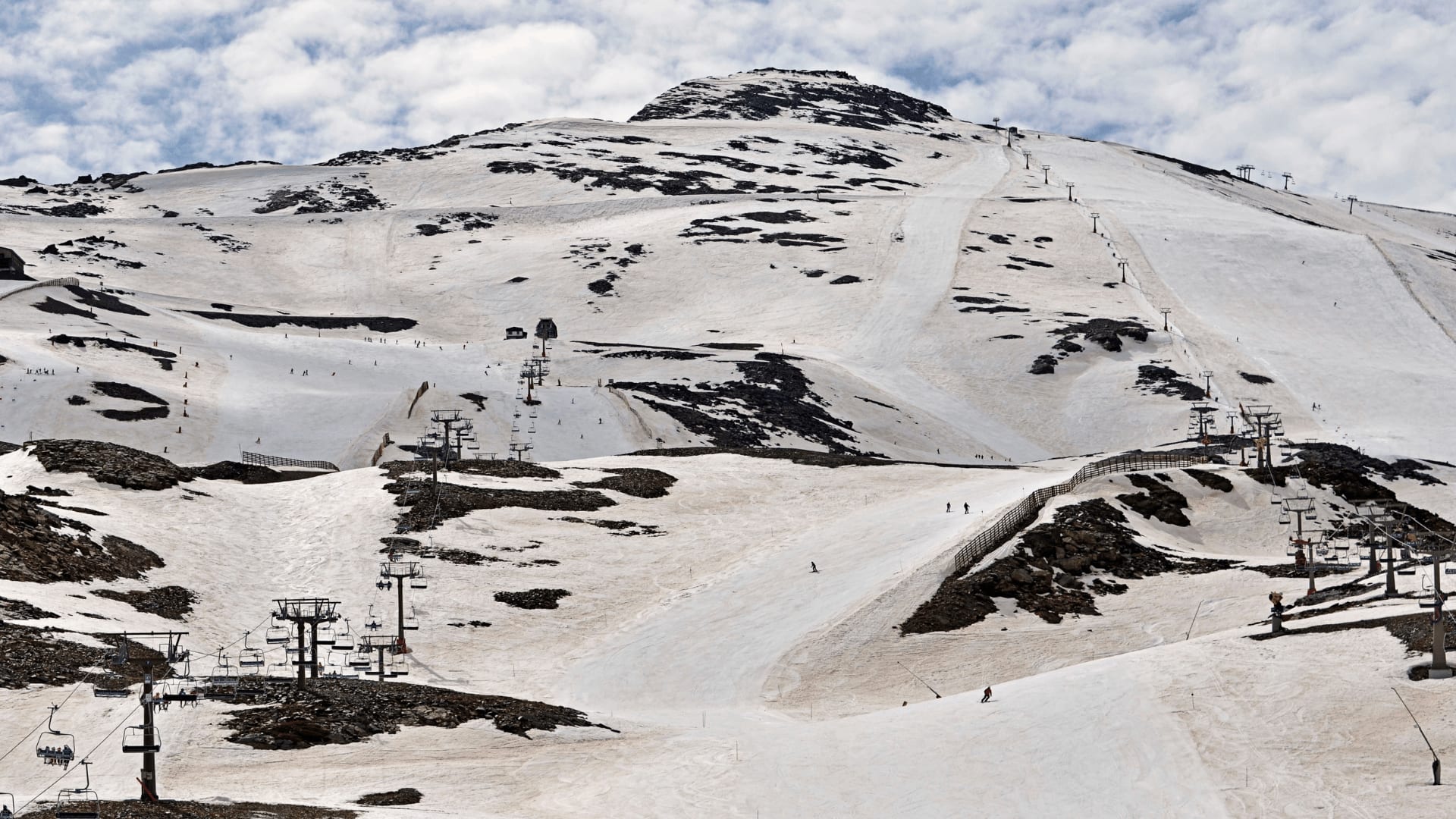
Lastly, we have the Sierra Nevada ski resort! Located in the heart of the Penibetic System in the South of Spain, Sierra Nevada is the third-highest mountain range in Europe!!!! Among its peaks, we find the highest peaks of the WHOLE Iberian Peninsula. And a fun fact, this is the sunniest ski resort in Europe. It has more than 100 kilometers of slopes, snow, and sun in abundance.
And we’re talking about Spain… this means fun is 100% guaranteed at night. Night skiing, tapas, and drinks are next to the slopes, concerts, restaurants, and discos so that everyone can enjoy a pleasant experience in the snow!
Maria Jose, 22 years from Valencia: Sierra Nevada is perfect if you want to snowboard or ski with your friends without spending lots of money on it (or if you’re not interested in highly advanced tracks)
It’s mostly an activity for friends between people who don’t know how to ski very well. It has a more manageable level than Baqueria and Formigal. In these two, you can find more challenging tracks. The good thing here is that it is further to southern Spain, which means more sunny days, compared to Baqueira and Formigal, which could be more cloudy and colder.
So… we all know it’s snow fun being bored in the Winter, and Spaniards got the solution! I hope you liked seeing our favorite spots for having fun in the cold, and also know better about our weather in Spain, the climate, temperatures and that the country is not everything about sun and beaches. We have gorgeous and diverse landscapes worth discovering and lots of paradisaic destinations! You can find the best ones in these articles:
7 Different And Incredible Landscapes You Will Find in Spain
The 16 Spanish National Parks and Their Breathtaking Views
7 remarkable Spanish Countryside Locations for a perfect getaway




